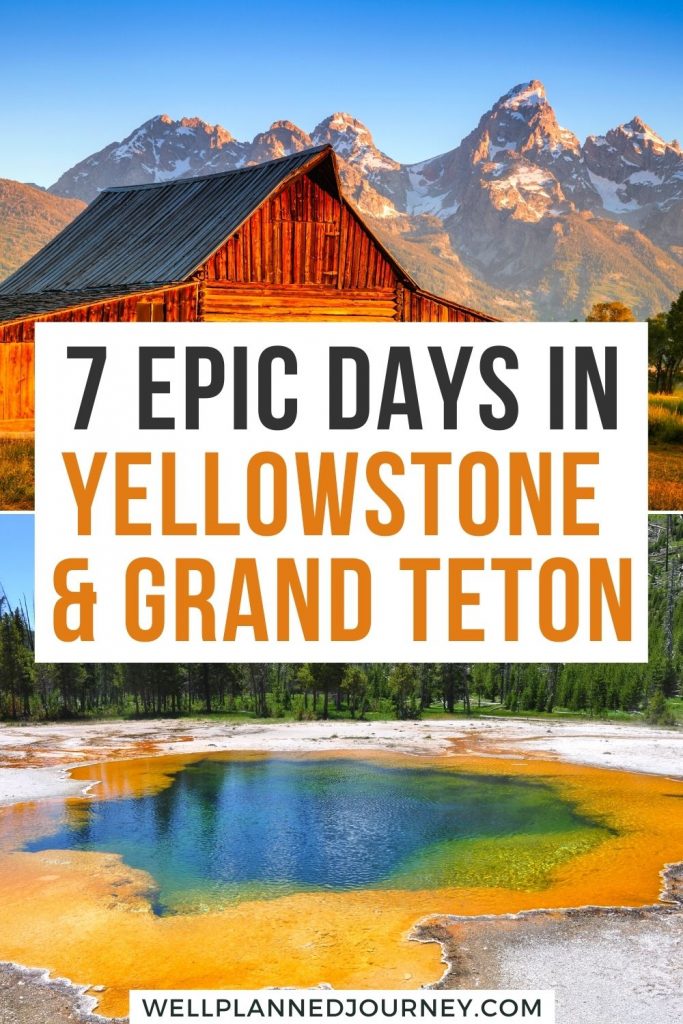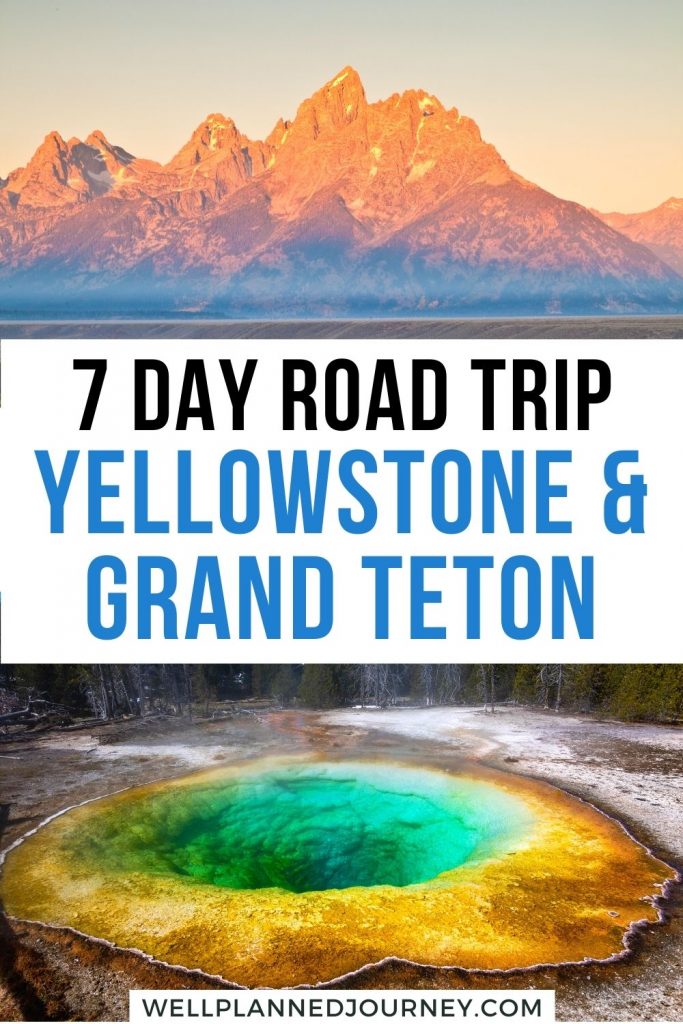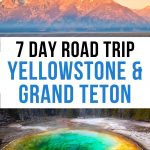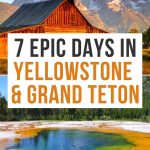Planning a trip to Yellowstone and Grand Teton but not sure where to start? These iconic national parks offer dramatic mountain peaks and stunning geothermal features, but figuring out the best way to explore both on one trip can be overwhelming.
This article provides a comprehensive seven-day itinerary to help you make the most of your visit, including tips on when to go, how many days you’ll need, where to stay, and how to get around.
Let’s start planning your once-in-a-lifetime trip to Yellowstone and Grand Teton!
This post may contain affiliate links, where I may receive a small commission at no additional cost to you. Read more in this disclosure policy.
How Many Days Do You Need in Yellowstone and Grand Teton?
Seven days is the perfect amount of time to explore both Yellowstone and Grand Teton, seeing the highlights without feeling too rushed. This itinerary breaks those seven days into four days in Yellowstone and three days in Grand Teton.
If you have less time, plan for at least 4 to 5 days, giving you one to two days in each park and a half-day for travel at each end. For those with more time, I’ve included ideas to extend this itinerary at the end of the post.
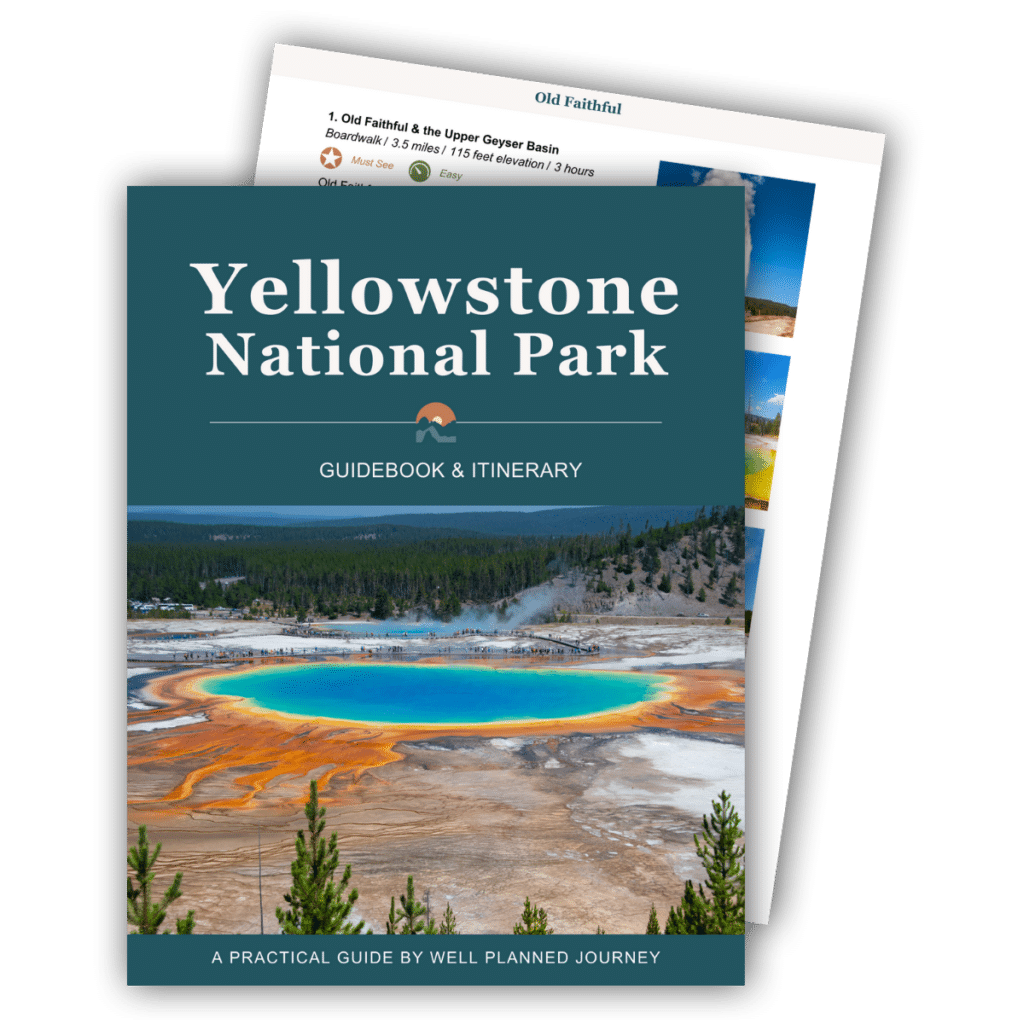
Get the Yellowstone Itinerary & Guidebook
The step-by-step itinerary and ultimate guidebook covers all the must-see geysers, hot springs, hikes, and sights. This 87-page guide is filled with detailed itineraries, insider tips, maps, regional overviews, and more for planning a stress-free trip to Yellowstone!
Best Time to Visit Grand Teton and Yellowstone
Both Yellowstone and Grand Teton experience harsh, long winters with lots of snow and freezing temperatures. Due to the short tourism season, summer tends to be incredibly crowded, particularly in July and August.
The best time to visit is from mid-June to early October. However, to avoid the peak crowds, consider visiting in June or from September to early October rather than mid-summer.
During this period, all park roads in Yellowstone and Grand Teton are typically open. Park roads usually close at the start of November and re-open in May.
Read More: Best Time to Visit Yellowstone
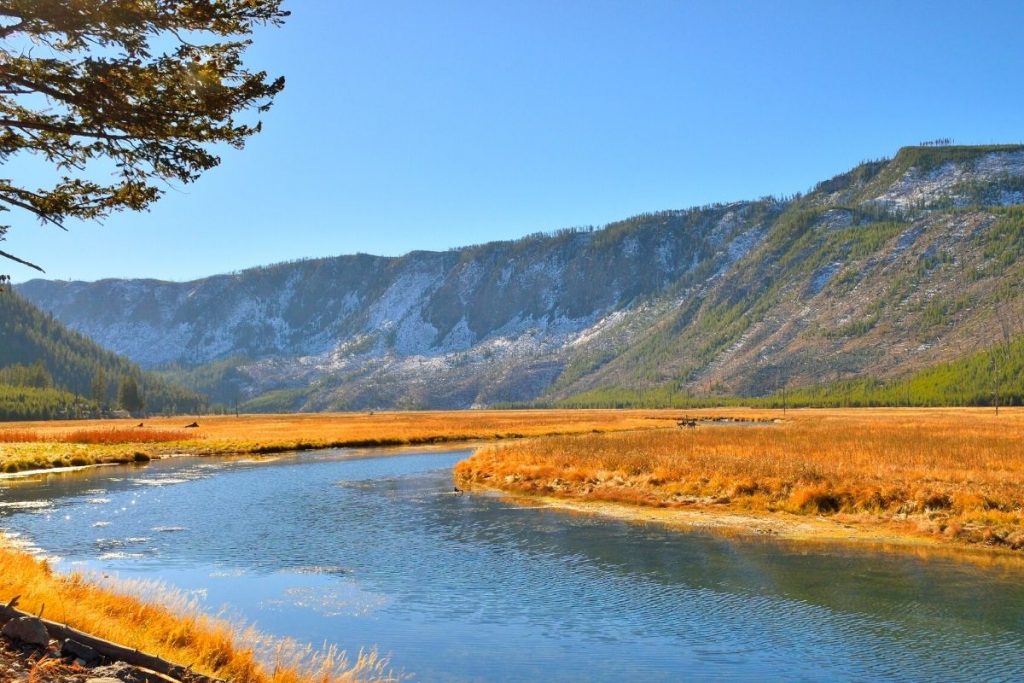
The 7-Day Grand Teton and Yellowstone Itinerary
Now that you have all the necessary details for planning a road trip to Yellowstone and Grand Teton National Park, let’s get to the itinerary!
- Day 1: Explore Old Faithful and the Upper Geyser Basin
- Day 2: Visit Norris Geyser Basin & Mammoth Hot Springs
- Day 3: See Tower-Roosevelt and Lamar Valley
- Day 4: Visit Grand Canyon of the Yellowstone & Yellowstone Lake, Drive to Grand Teton
- Day 5: See Mormon Row, Hike Taggart Lake, Drive 42 Mile Scenic Loop
- Day 6: Explore the Jenny Lake area
- Day 7: Sunrise at Schwabacher Landing, Head Home from Grand Teton
Day 1: Explore Old Faithful and the Upper Geyser Basin
Start your first day early at Old Faithful, which erupts every 1.5 hours. While this famous geyser is neither the largest geyser nor the most regularly erupting geyser in the park, it is the most accessible predictable geyser in Yellowstone.
Check the eruption schedule the night before to determine when to arrive in the morning.
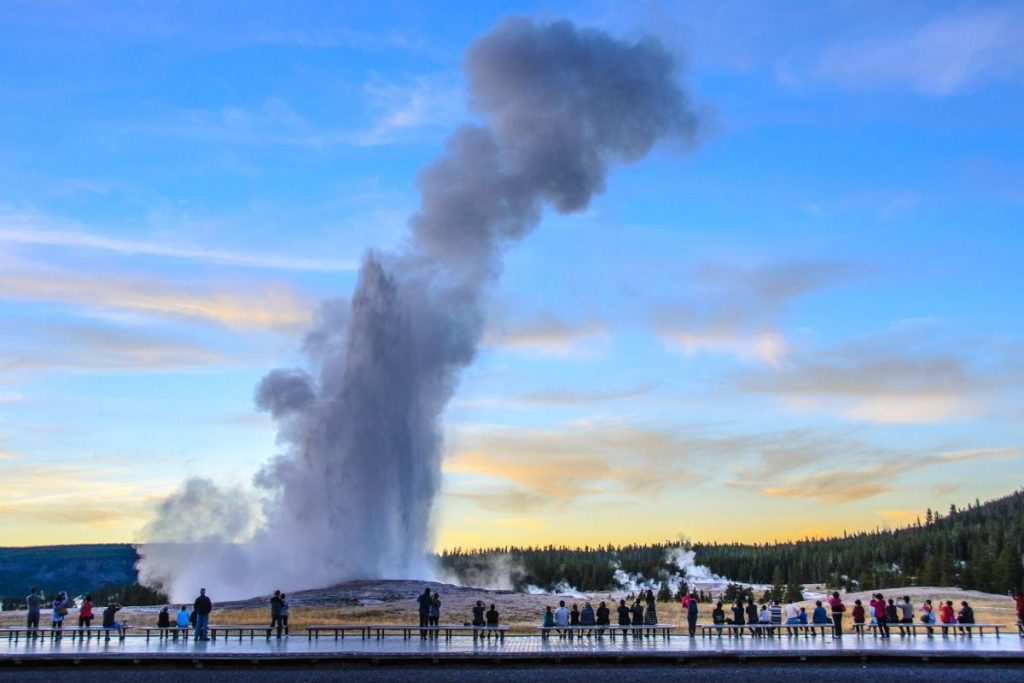
After catching the Old Faithful eruption from the viewing area, explore the rest of the Upper Geyser Basin. Don’t miss Castle Geyser, Grand Geyser, Riverside Geyser, Daisy Geyser, and Morning Glory Pool!
Finally, end your time here by walking through the Old Faithful Inn and the Yellowstone National Park Visitor Center.
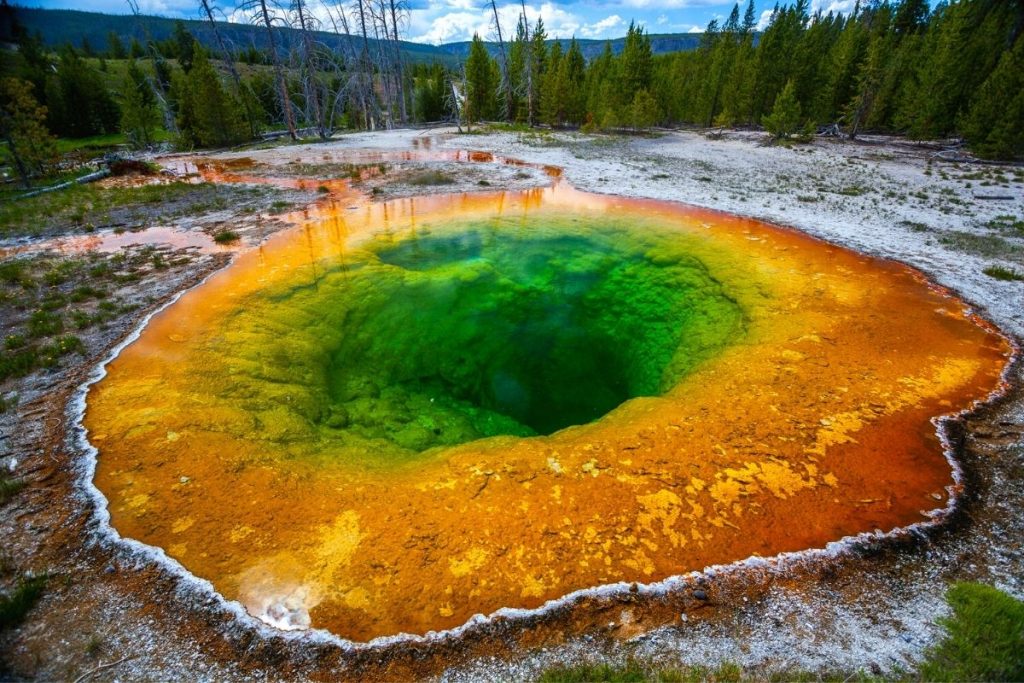
In the early afternoon, stop at the nearby Biscuit Basin. This lesser-visited geyser basin is often overshadowed but boasts impressive geothermal features. Don’t miss the brightly-colored Sapphire Pool, Mustard Spring, and Jewel Geyser.
In the late afternoon, you’ll visit another of Yellowstone’s most popular attractions, Grand Prismatic Spring.
There are two ways to see Grand Prismatic:
- Grand Prismatic Overlook: This 1.2 mile roundtrip hike from the Fairy Falls Trailhead provides the best view of the falls from above. The vibrant colors are best seen in the afternoon sunlight after the morning fog has burned off.
- Midway Geyser Basin Boardwalk: If you aren’t up for the hike, see the spring up-close from the accessible Midway Geyser Basin boardwalks.
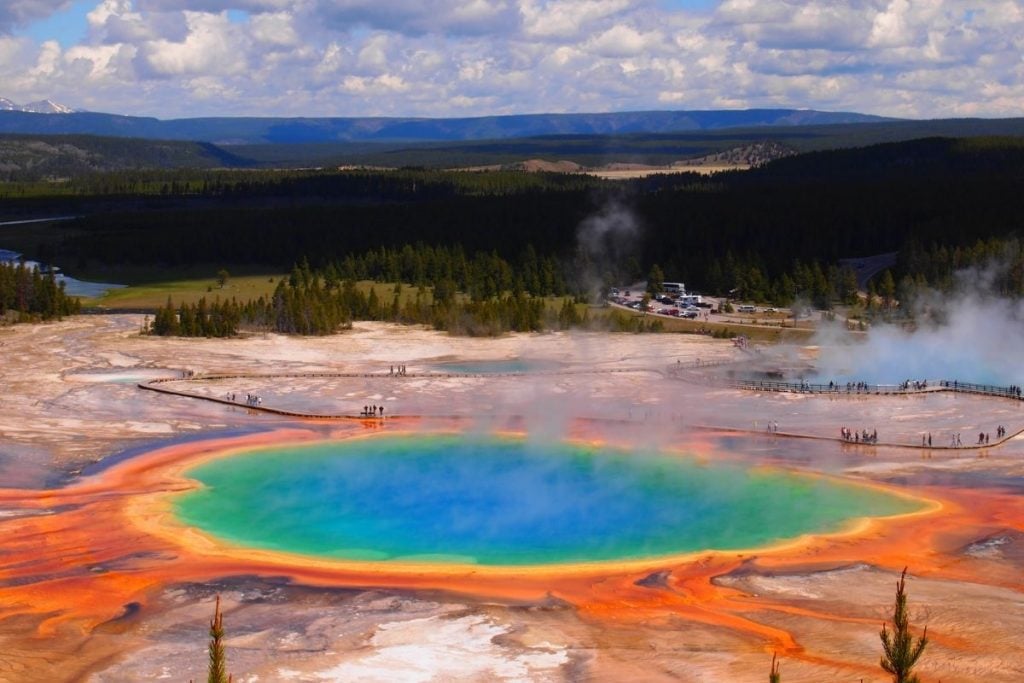
Next, stop by the Fountain Paint Pot Trail, located in the Lower Geyser Basin. The Fountain Paint Pot Trail features several hydrothermal features, the most notable of which are the mud pots. These are brownish-gray pools resembling boiling clay or mud.
End your day by driving the Firehole Canyon Scenic Drive, stopping at the roadside Firehole Falls.
Read More: 22 Best Things to Do in Yellowstone
Day 2: Visit Norris Geyser Basin and Mammoth Hot Springs
Start your second day in Yellowstone with a trip to the Norris Geyser Basin. It is made up of two smaller geyser basins: Porcelain Basin and Back Basin.
In the Porcelain Basin, don’t miss Constant Geyser, colorful runoff from Whirligig and Pinwheel Geysers, Crackling Lake, and Congress Pool.
In the Back Basin, Steamboat Geyser is the main attraction, but it is rarely ever predicted to erupt. Be sure to stop by Emerald Spring, Cistern Spring, and Echinus Geyser too.
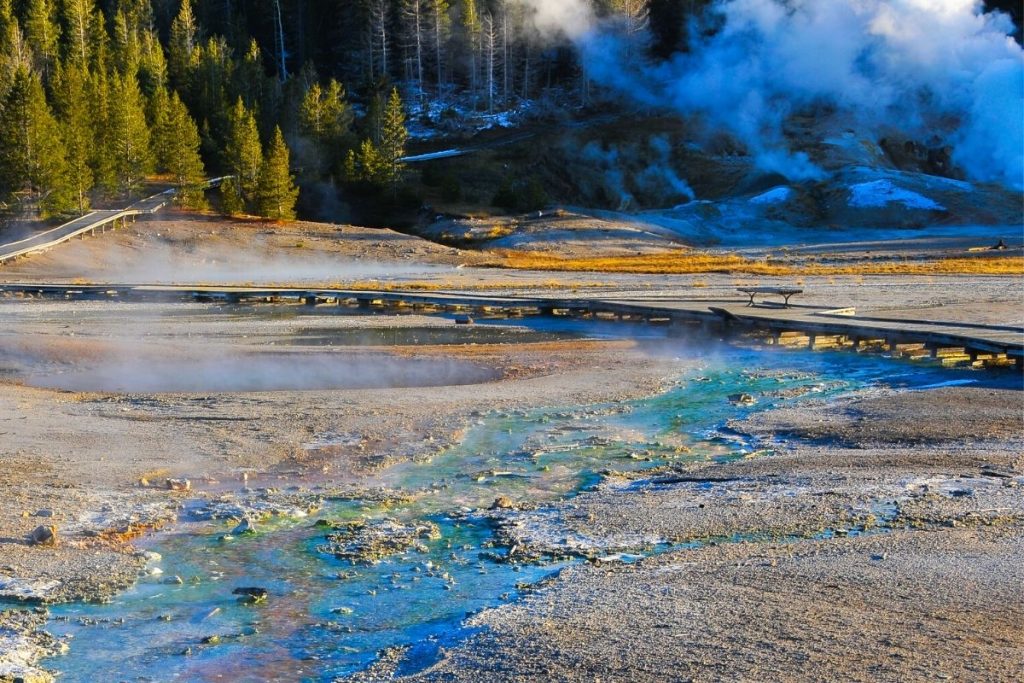
After exploring the Norris Geyser Basin, head north along Grand Loop Road toward Mammoth. This small town is located near the North Entrance of Yellowstone.
Mammoth Hot Springs is one of the more unique hot springs in the park. Unlike other hot springs, Mammoth Hot Springs is made of travertine terraces. These uncommon formations were formed by underground geothermal activity, dissolving the calcium carbonate on the surface.
The best way to see Mammoth Hot Springs is on a short walk through the Lower Terraces. The Upper and Main Terraces are accessible on a short scenic drive, but admittedly there’s not as much to see here.
If you’re short on time, I recommend just doing the Lower Terraces. Don’t miss Palette Spring, Minerva Terrace, and Mound and Jupiter Terraces.
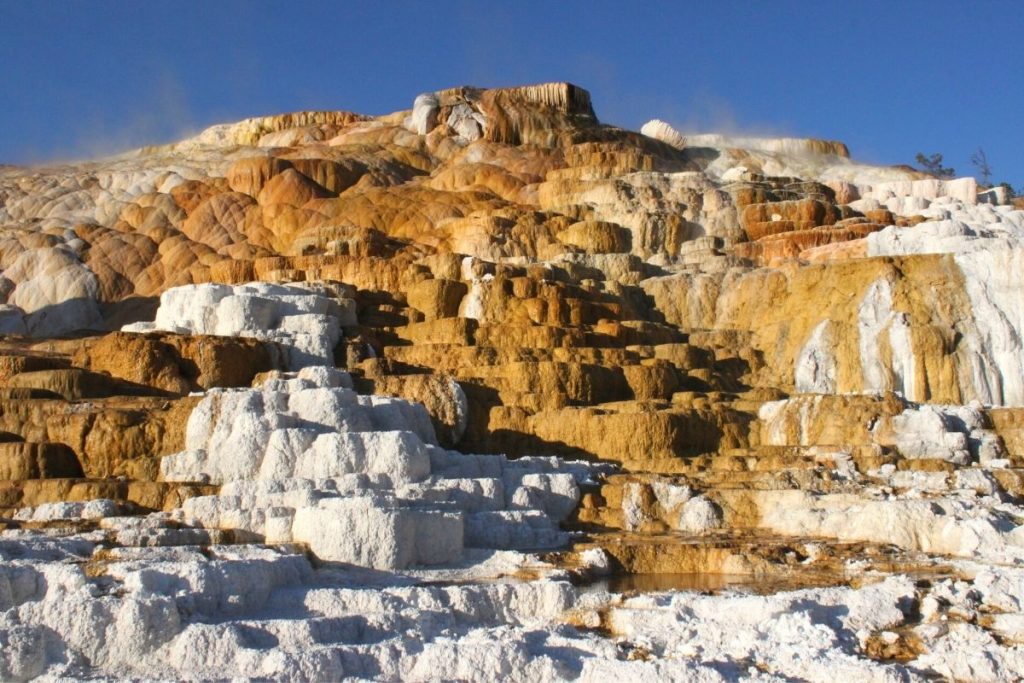
After seeing Mammoth Hot Springs, walk through the village, checking out the Albright Visitor Center and historic Fort Yellowstone. Mammoth also provides an excellent opportunity to spot elk, particularly during rutting season from mid-August through September.
End your day by visiting the Roosevelt Arch in Gardiner, about 15 minutes outside the park.
Read More: Ideas for One to Five Days in Yellowstone
Day 3: Visit Tower-Roosevelt and Lamar Valley
Start your day by visit Tower Fall, a cascade located near Tower General Store. If you’re up for a short, but steep hike, continue down the switchbacks to Yellowstone River Overlook. An excellent alternative to the hike is Calcite Springs Overlook.
Next, head out to Lamar Valley. This valley, located in the northeastern part of the park, is an excellent spot for bison, bears, coyotes, and wolves.
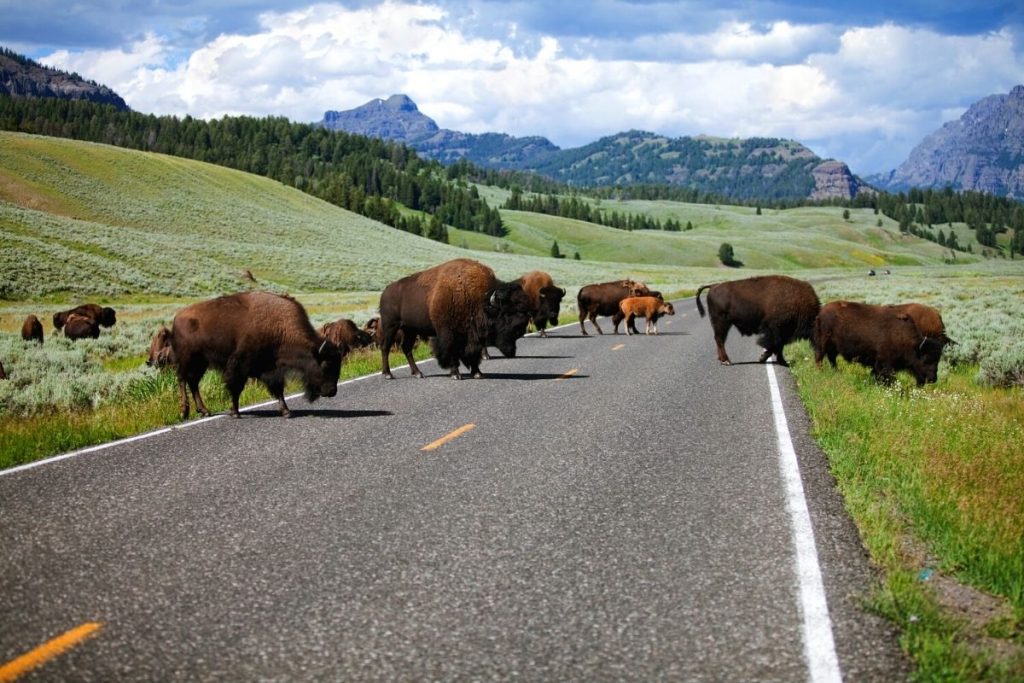
There are plenty of excellent pull-offs in Lamar Valley for wildlife viewing. However, wildlife will be further away as the valley is more expansive than Hayden Valley.
Therefore, I highly recommend bringing a pair of quality binoculars or a spotting scope for a closer look.
For the afternoon, pick between hiking Mount Washburn or driving Beartooth Highway.

Get the Yellowstone Itinerary & Guidebook
The step-by-step itinerary and ultimate guidebook covers all the must-see geysers, hot springs, hikes, and sights. This 87-page guide is filled with detailed itineraries, insider tips, maps, regional overviews, and more for planning a stress-free trip to Yellowstone!
Day 4: Explore the Grand Canyon of the Yellowstone and Head to Grand Teton
On your last day in Yellowstone National Park, you’ll explore two of the most underrated parts of the park: the Grand Canyon of the Yellowstone and Yellowstone Lake.
Start your day in Hayden Valley. This expansive valley near Canyon Village is an excellent place to spot wildlife, including bison, elk, bears, and bald eagles. The best way to spot wildlife is to find a spot to pull over and wait. Often you won’t see wildlife right away, so your best bet is to bring a camping chair and stakeout.
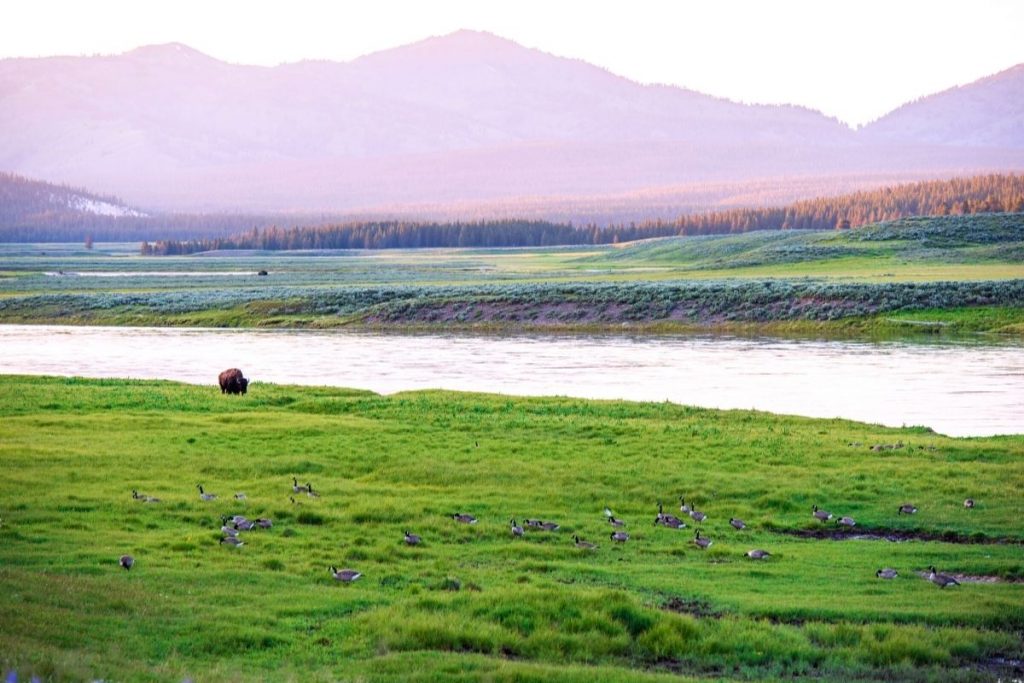
Use the rest of your morning to explore Grand Canyon of the Yellowstone. This iconic canyon was carved by the Yellowstone River and features dramatic rock colors and distinctive geology.
The best way to see the canyon is to take a scenic drive of the North Rim and South Rim, stopping to see the incredible viewpoints and hiking the short trails.
The two main attractions in the canyon are its waterfalls. The Lower Falls is the tallest waterfall in the park and is about twice the height of Niagara Falls. The Upper Falls is smaller and quieter and is best seen from the South Rim.
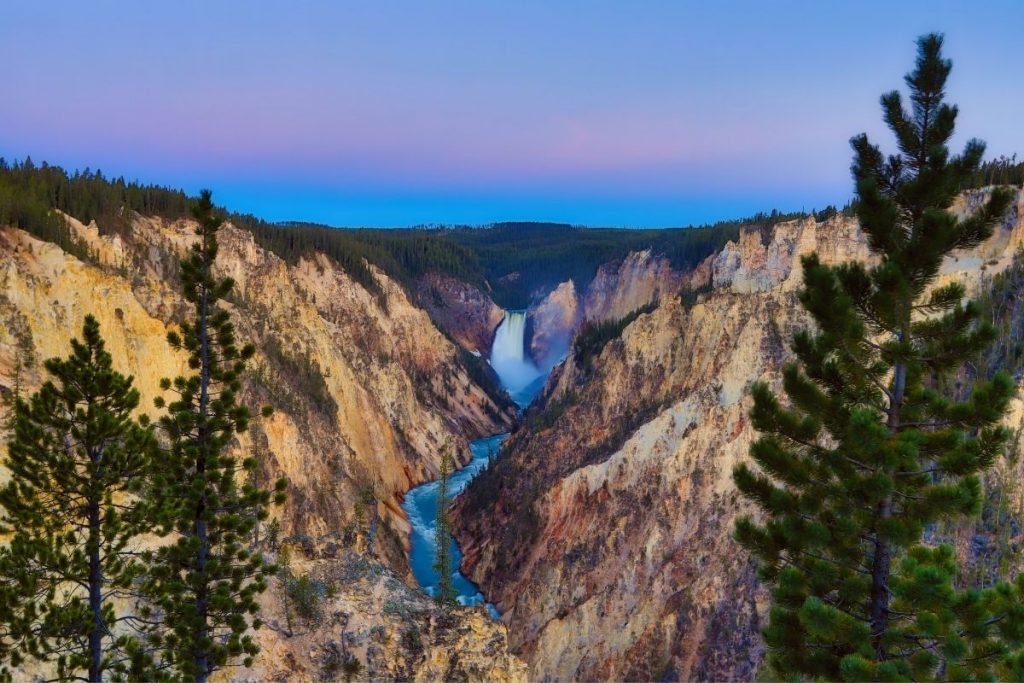
Start by driving the South Rim to Artist Point. This viewpoint is best around mid-morning after the light can penetrate the canyon. After taking in the picturesque view of the Lower Falls from Artist Point, head to Upper Falls Viewpoint.
Next, continue to the North Rim. This scenic drive follows a one-way loop. Don’t miss Lookout Point, Grand View, and Inspiration Point.
Also, try the steep Brink of the Lower Falls or Red Rock Point trails if you want to stretch your legs on a short hike.
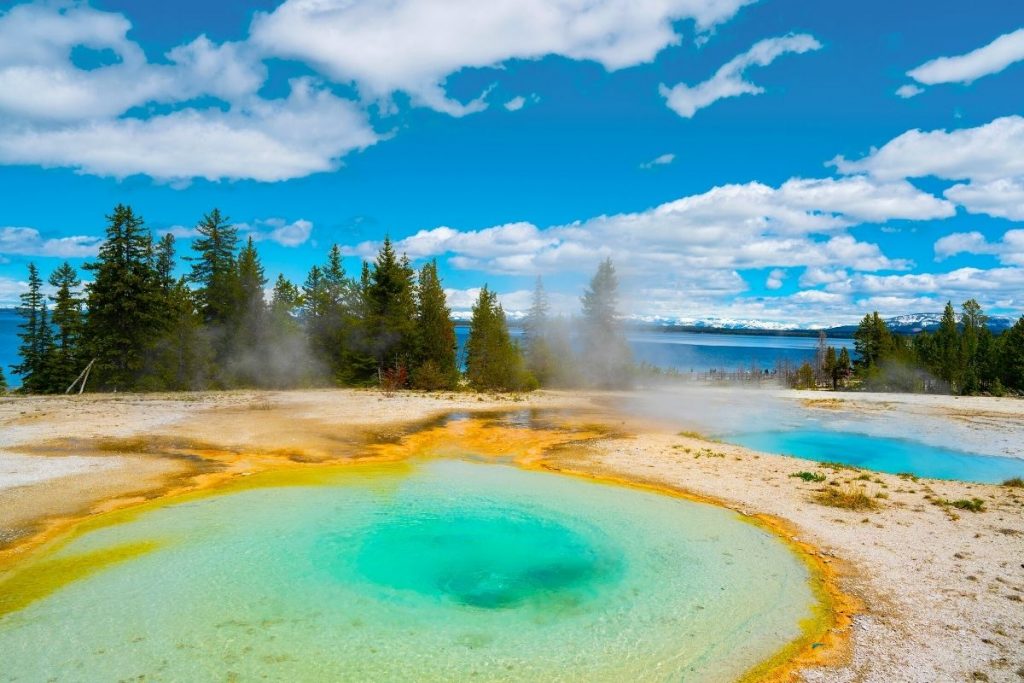
After your scenic drive of the Grand Canyon of the Yellowstone, head south on Grand Loop Road towards Grand Teton National Park. Before leaving the park, be sure to stop at West Thumb Geyser Basin.
This stunning geyser basin is one of my favorites in Yellowstone. Its location along the shores of Yellowstone Lake provides both incredible views and unique geothermal activity.
Don’t miss the Abyss Pool, Fishing Cone, and Black Pool.
After you’ve had your fill of geysers and springs, head south, exiting Yellowstone National Park. Be sure to stop at Lewis Falls and the Grand Teton National Park Sign!

Before reading about Grand Teton, check out these posts on Yellowstone National Park!
- Itinerary: Yellowstone 1 to 5 Day Itineraries
- Road Trip: Salt Lake City to Yellowstone & Grand Teton
- Things to Do: 22 Best Things to Do in Yellowstone
- Hikes: 15 Best Hikes in Yellowstone
As you enter Grand Teton National Park, be sure to stop at Jackson Lake Overlook. This spot provides one of your first views of the Tetons over Jackson Lake.
End your first evening in Grand Teton National Park with dinner or a drink at Jackson Lake Lodge at sunset. The views of the Tetons from the back deck are the best in the park!
If you want to have dinner at the impressive Mural Room at Jackson Lake Lodge, be sure to make reservations at least a month in advance. The Blue Heron Lounge offers delicious cocktails that you can enjoy on the back deck.
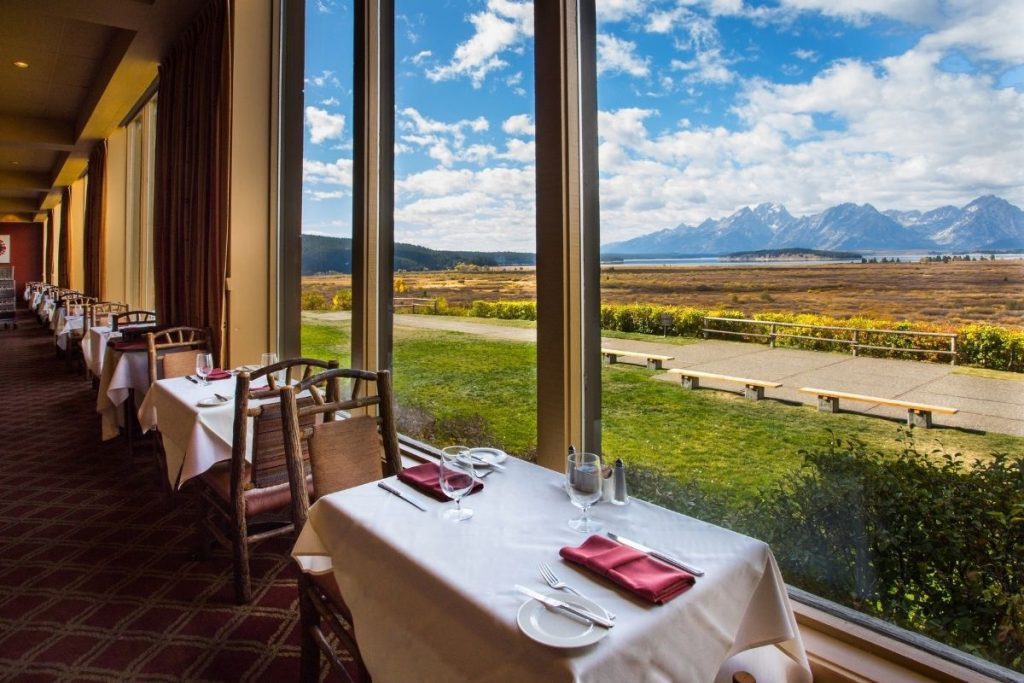
Day 5: Mormon Row, 42 Mile Scenic Drive, and Taggart Lake
Start your first full day in Grand Teton National Park early with a morning drive to Mormon Row Historic District.
This area is a photo-famous community of homesteads built by Mormon settlers, the Moultons, that lived in the Tetons in the 1890s. Their iconic barns provide an excellent foreground with the Tetons in the background.
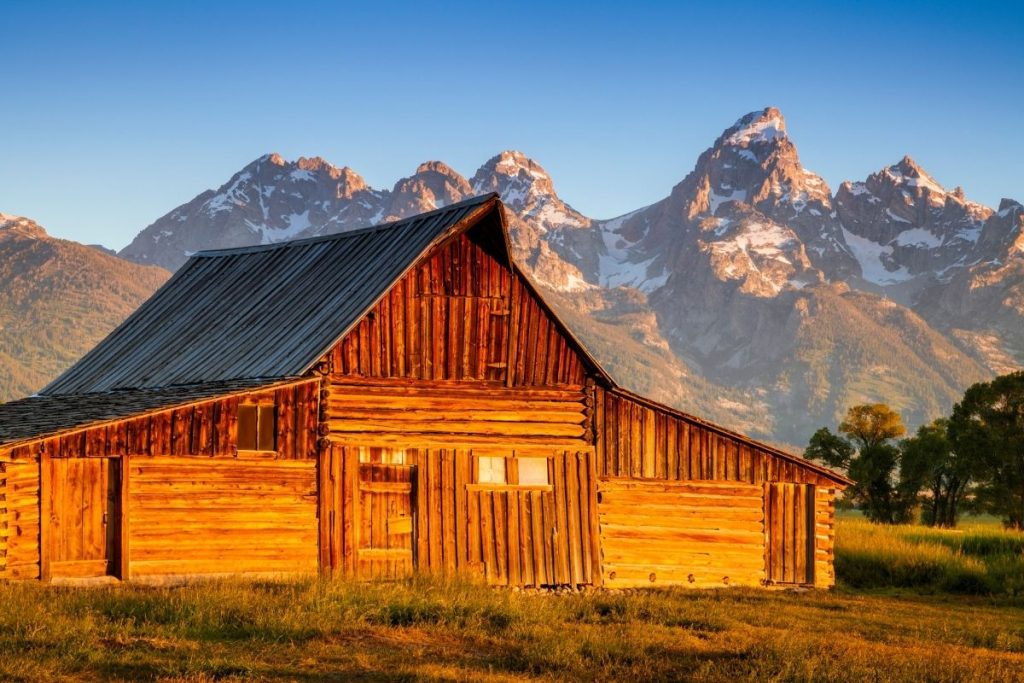
After capturing the picturesque Moulton Barns at Mormon Row, head to Taggart Lake. The easy 4-mile loop to this popular lake provides up-close views of Grand Teton. The clear water and excellent views make this hike the perfect summer adventure.
If you’re looking to escape the crowds at Taggart Lake, consider hiking the entire Taggart Lake and Bradley Lake Loop trail.
This trail heads to nearby Bradley Lake and loops back past Taggart Lake on a 6-mile moderate hike. Bradley Lake has minimal crowds and is arguably more scenic than Taggart Lake!
Aim to be at the Taggart Lake Trailhead before 9 AM.
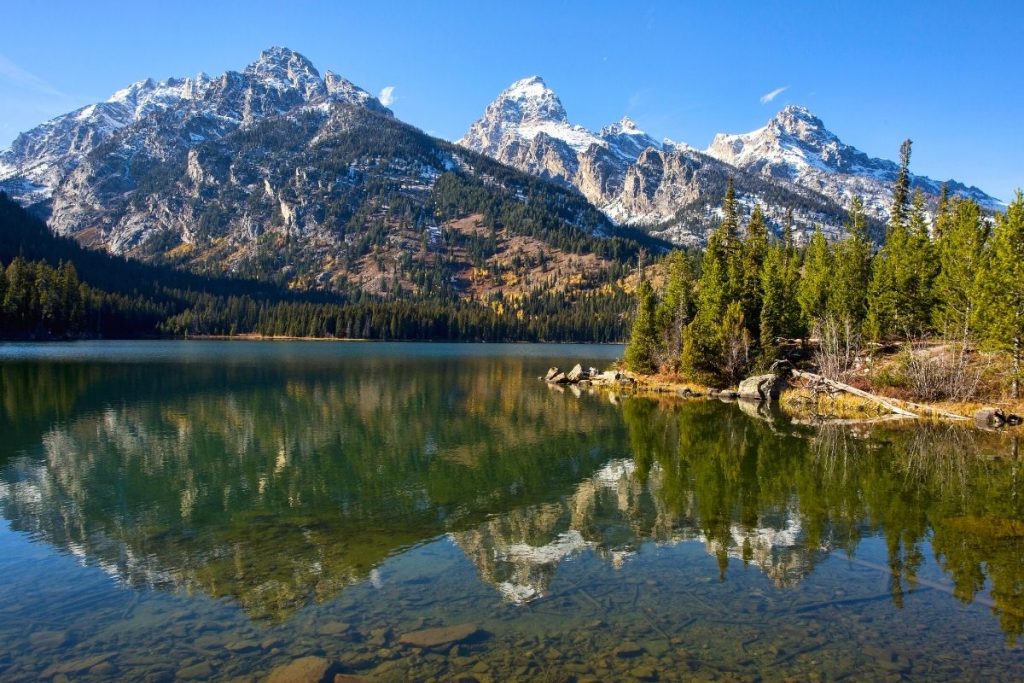
After your hike, stop by the Craig Thomas Discovery Center, the main visitor center in Grand Teton National Park. If you want to talk to a ranger, stamp your national park passport, or buy souvenirs, do it here!
The Craig Thomas Discovery Center also offers the most impressive displays I’ve seen in a national park, detailing the indigenous history of the area and the ecosystems found in Grand Teton.
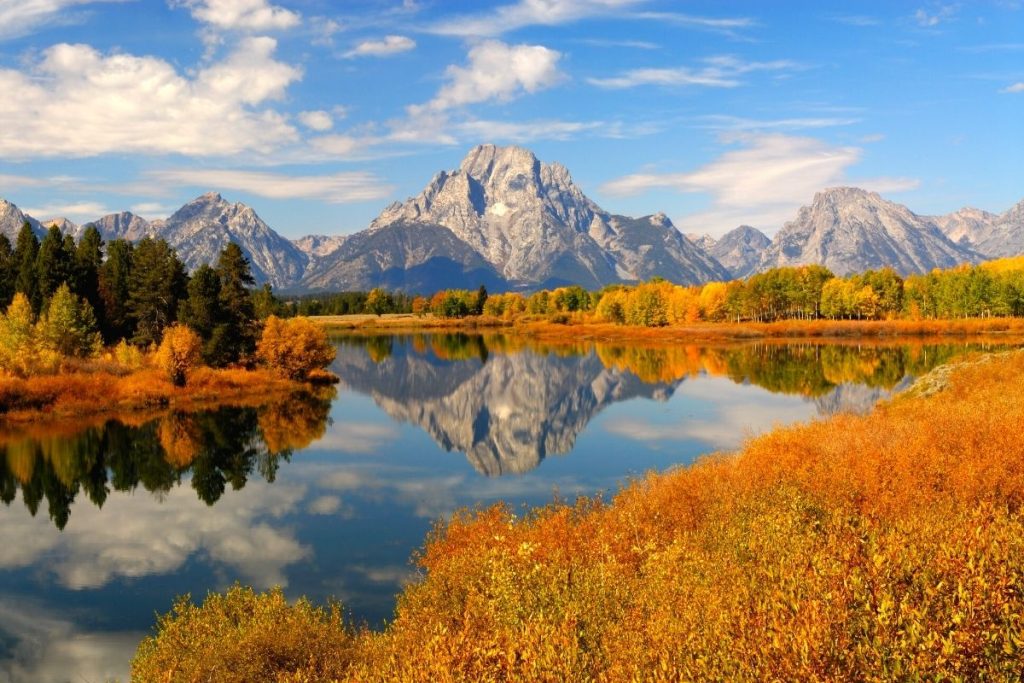
End your day in Grand Teton by completing 42 Mile Scenic Loop. This must-do scenic drive is the main route through Grand Teton National Park, formed by Highway 191 and Teton Park Road.
Depending on where you’re staying, I’d recommend going about the scenic drive differently.
If you’re staying south of the park, like in Jackson, do the scenic drive in its entirety in the afternoon/evening, stopping at the scenic lookouts in this order:
- Chapel of the Transfiguration
- Teton Glacier Turnout
- Jenny Lake Overlook
- Cathedral Group Turnout
- Mountain View Turnout
- Jackson Lake Overlook off Signal Mountain Summit Road
- Willow Flats Overlook
- Oxbow Bend (excellent spot for seeing wildlife before sunset)
- Elk Ranch Flats Turnout
- Snake River Overlook (great for sunset)
- Teton Point Turnout
- Glacier View Turnout
- Blacktail Ponds Overlook
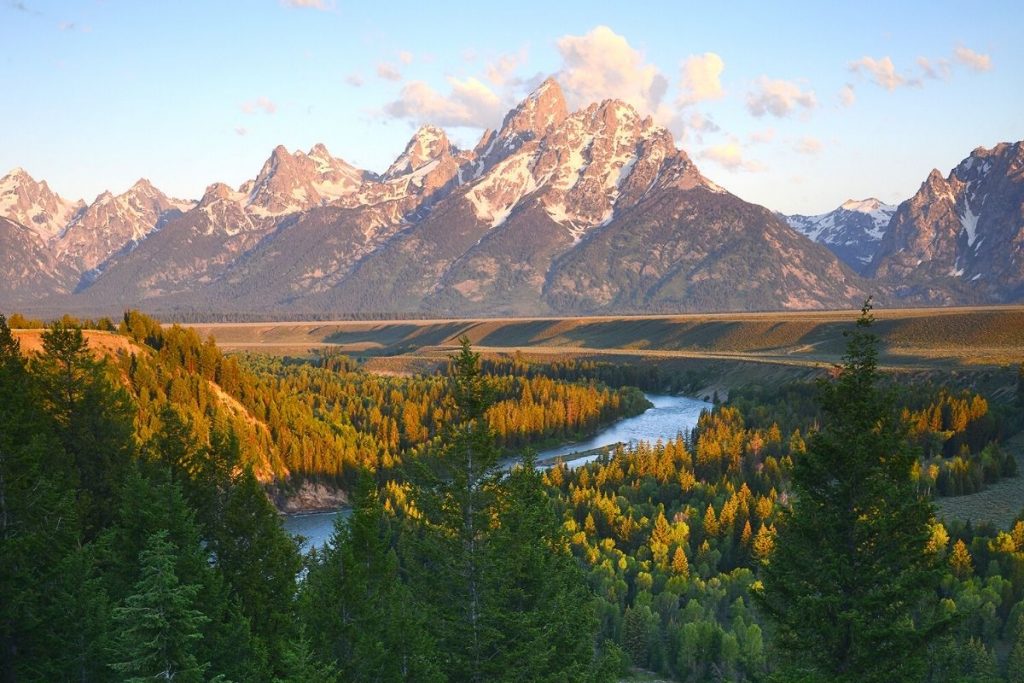
If you’re staying in the northern part of the park, like Colter Bay Village or near Jackson or Jenny Lake, split up the scenic drive. Instead, you’ll stop at the spots along Highway 191 in the morning on the way to Mormon Row and finish the scenic drive in the afternoon along Teton Park Road.
Visit these scenic stops on the way to Mormon Row in the morning:
- Oxbow Bend (excellent spot for seeing wildlife just after sunrise)
- Elk Ranch Flats Turnout
- Snake River Overlook (great for early morning glow on the Tetons)
- Teton Point Turnout
- Glacier View Turnout
- Blacktail Ponds Overlook
Visit these viewpoints in the afternoon after hiking Taggart Lake:
- Chapel of the Transfiguration
- Teton Glacier Turnout
- Jenny Lake Overlook
- Cathedral Group Turnout
- Mountain View Turnout
- Jackson Lake Overlook off Signal Mountain Summit Road
- Willow Flats Overlook (great for wildlife viewing before sunset)
Read More: 25 Best Things to Do in Grand Teton
Day 6: Explore the Jenny Lake Region
On your last full day in Grand Teton, you’ll explore the park’s most famous region: Jenny Lake. There are truly endless possibilities for adventure at Jenny Lake.
The best and most visited attraction in Jenny Lake is the short hike to Hidden Falls and Inspiration Point.
Most visitors choose to take the Jenny Lake boat shuttle across the lake, hike Hidden Falls and Inspiration Point, and return on the boat. The Jenny Lake boat shuttle cuts off 2 miles of hiking each way and costs $20 roundtrip.
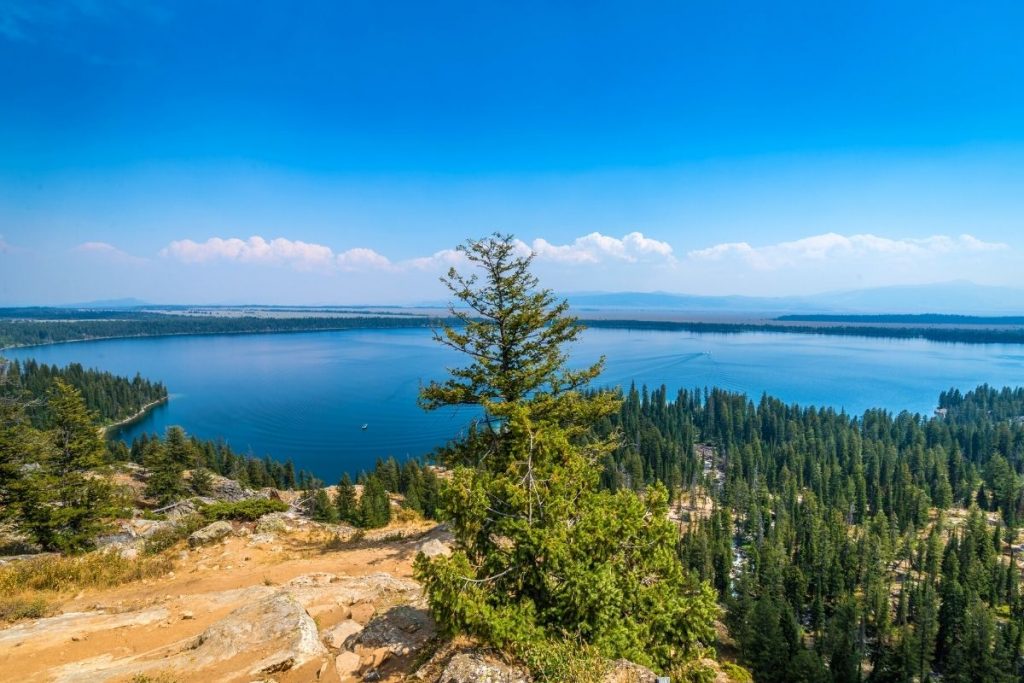
Depending on your activity level and interest, here’s what I would recommend:
- If you’re looking for a limited mobility option: Drive Jenny Lake Road and take a scenic boat tour on Jenny Lake.
- If you’re looking for a family-friendly activity: Take the boat to hike Hidden Falls and Inspiration Point and venture on to the Cascade Canyon Trail for a stroll until you feel ready to turn back.
- If you’re looking for a moderate, ultra-scenic hike: Take the boat across Jenny Lake and hike Cascade Canyon (~9 miles, 1,102 feet elevation road trip). This hike is long, but the elevation is mild (~4% average grade). Cascade Canyon is easily one of my favorite national park hikes and well worth it if you’re up for the distance. You can also choose to return at any point as the trail is out-and-back.
- If you’re an advanced hiker looking for a challenge: Hike to Lake Solitude. This long but rewarding trail is the best hike I’ve ever done. Not only do you get the scenic views of the Cascade Canyon trail, but you reach a quiet, stunning alpine lake at the end of the trail. If you can handle the 16+ mile hike with 2,670 feet elevation, it’s a must-do! You also have the option of shortening the hike by a few miles by taking the boat across Jenny Lake.
Read More: 18 Best Hikes in Grand Teton

Day 7: Schwabacher Landing and Head Home from Grand Teton
On your last day in Grand Teton, head to Schwabacher Landing for sunrise. This sunrise spot is a favorite among photographers.
Drive to the end of Schwabacher’s Landing Road (it’s bumpy and unpaved, so AWD or a high-clearance vehicle at a minimum is recommended).
While the view from the parking lot is spectacular, walk to the end of the trail for an incredible sunrise view of the Grand Tetons reflected in the Snake River.

After sunrise, keep your eyes peeled for wildlife, like moose, feeding the Snake River along Schwabacher’s Landing Road. You can also make one final wildlife spotting visit to Oxbow Bend.
Head to the airport by mid-morning, depending on your flight time and airport location. If you have more time in Grand Teton, consider spending time in the town of Jackson or hiking to Phelps Lake.
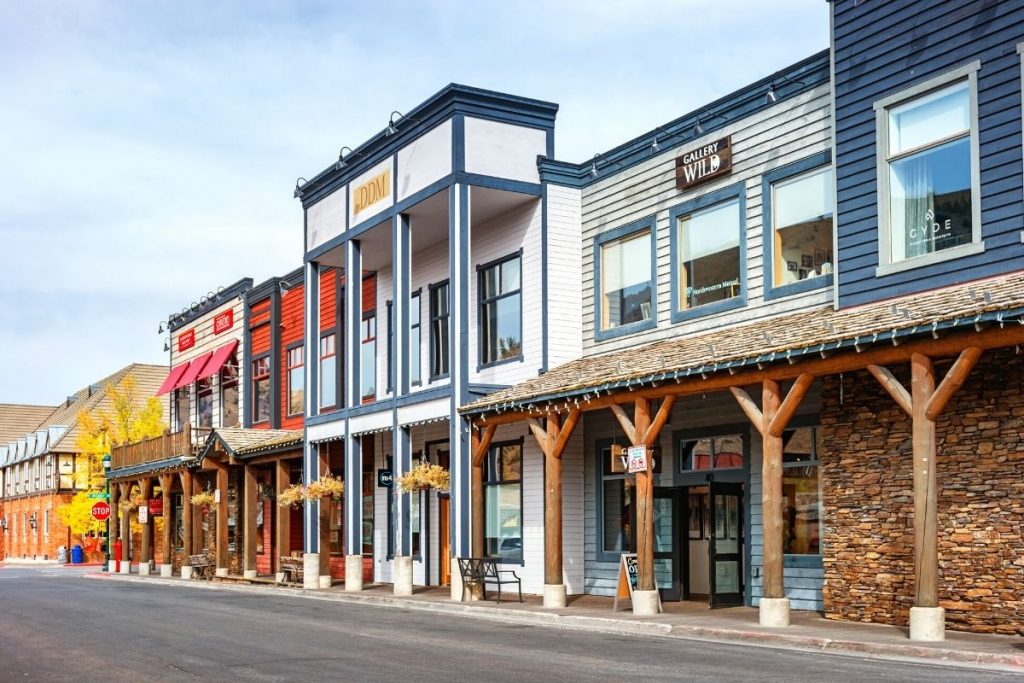
If you’re flying out of Salt Lake City, there are many scenic stops on your return road trip. Check out this Yellowstone to Salt Lake City road trip guide for some ideas!
Before continuing, check out these posts on Grand Teton!
- Things to Do: 25 Best Things to Do in Grand Teton
- Hikes: 18 Best Hikes in Grand Teton
Modifying the Itinerary for Yellowstone and Grand Teton
If you have more or less time to spend in these two national parks, consider some of these options.
If you have more than seven full days in Grand Teton and Yellowstone:
- Spend more time hiking in Grand Teton. Cascade Canyon, Phelps Lake, Lake Solitude, String Lake, or the Jenny Lake Loop are great options. Read more about the best hikes in Grand Teton.
- Rent a kayak or canoe and paddle Jenny Lake. Get your rental here.
- Spend more time hiking in Yellowstone. Read more here about the best hikes in Yellowstone.
Check out this post for more ideas on what to do with 5 or more days in Yellowstone!
If you have less than seven days for your trip, consider these itinerary modifications:
- If you have four or fewer days, focus your time on the top attractions in each park. The can’t-miss days on this itinerary are Day 1 & Day 4 in Yellowstone (Old Faithful, Grand Prismatic, Grand Canyon of the Yellowstone) and Day 6 in Grand Teton (Jenny Lake).
- If you only have five days, skip a day in each park. For example, I’d recommend skipping Day 3 (Tower-Roosevelt and Lamar Valley) and Day 5 (Mormon Row, Taggart Lake). Instead, on Day 7, swap out Mormon Row for Schwabacher Landing.
- If you only have six days, skip Day 3 in Yellowstone and keep all three days in Grand Teton.
Other Nearby Places to Explore from Grand Teton and Yellowstone
If you have more than seven days to spend in Yellowstone and Grand Teton, I highly recommend adding on a few more nearby destinations:
- Town of Jackson, Wyoming – Minutes from Grand Teton
- Beartooth Highway – 1 hour from the Yellowstone
- Salt Lake City – 5 hours from Grand Teton and Yellowstone
- Glacier National Park – 6 hours from Yellowstone
- Devils Tower National Monument – 6 hours from Yellowstone
- Theodore Roosevelt National Park – 7 hours from Yellowstone
- Rocky Mountain National Park – 8 hours from Grand Teton
- Mount Rushmore National Memorial – 8 hours from Yellowstone
- Badlands National Park – 8 hours from Yellowstone
How to Get to Yellowstone and Grand Teton
Both Yellowstone and Grand Teton are located in northwestern Wyoming. The best way to get to these national parks is by flying unless you live within driving distance.
The closest airports to Yellowstone and Grand Teton are:
- Yellowstone Airport (WYS) – 5 minutes to the West Entrance of Yellowstone
- Jackson Hole Airport (JAC) – Located inside Grand Teton National Park
- Salt Lake City International Airport (SLC) – 5 hours to both parks
Check out this post on my Salt Lake City to Yellowstone road trip itinerary if you choose to fly into Salt Lake.
Once you arrive at the parks, the best way to get around is by car. Unlike other parks, Yellowstone and Grand Teton do not offer shuttles.
You can read more about the pros and cons of each airport for flying into Yellowstone here.
Where to Stay When Visiting Yellowstone and Grand Teton
For your road trip, you have several different lodging options. Staying inside the parks reduces daily driving time, especially in Yellowstone. But staying outside the park is typically more budget-friendly with more availability.
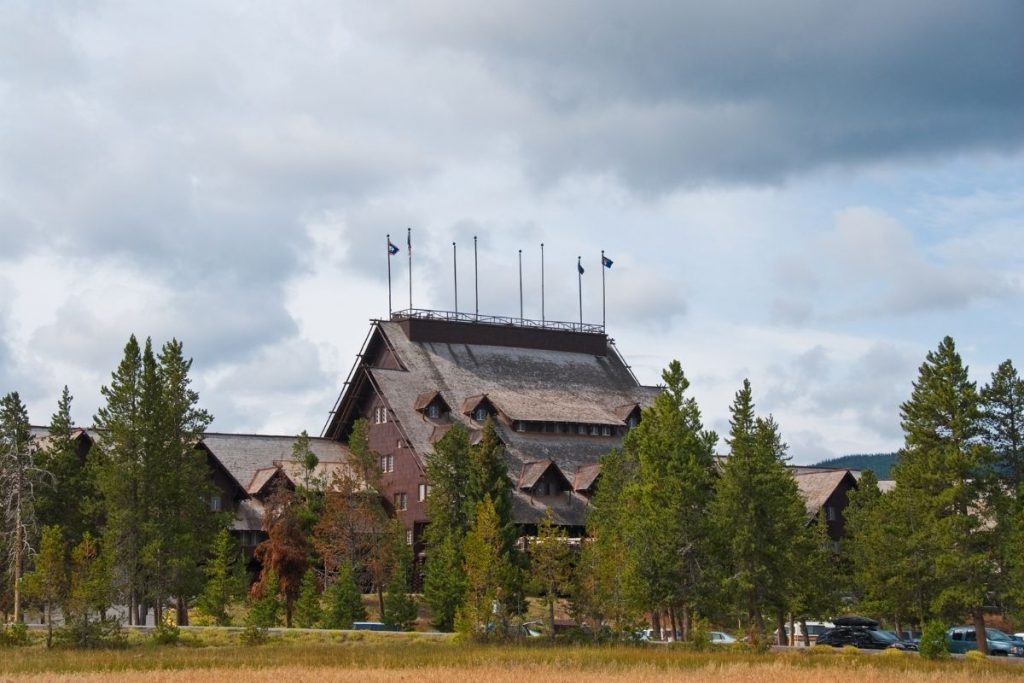
Where to Stay When Visiting Yellowstone National Park
During your time in Yellowstone, I recommend booking a place in Canyon Village inside the park or outside the park in West Yellowstone. Old Faithful can also be a good alternative, but is slightly less centrally located.
Best Lodges Inside Yellowstone:
- Canyon Lodge & Cabins, located inside Yellowstone, is a community of hotels and small cabins a short drive from Hayden Valley and Grand Canyon of the Yellowstone
- Old Faithful Inn, located inside Yellowstone, is a luxury hotel walking distance to Old Faithful and Upper Geyser Basin
- Old Faithful Lodge & Cabins, located inside Yellowstone, is a more budget-friendly lodge walking distance to Old Faithful and Upper Geyser Basin
Best Hotels in Nearby West Yellowstone:
- The Evergreen, a mountain-inspired lodge with 17 guest rooms in the heart of West Yellowstone
- Explorer Cabins, resort-style cabins with 50 guest rooms and an indoor pool, perfect for families located in West Yellowstone
- 1872 Inn, an updated adults-only hotel with 18 guest rooms only minutes to the park entrance in West Yellowstone
This interactive map can help you search all the available hotels and rental properties near Yellowstone National Park! Simply scroll and click the map below to see what is available!
If you’re looking for a more comprehensive guides, check out these posts on the Best Lodges & Hotels Around Yellowstone or the Best Campgrounds in Yellowstone

Where to Stay When Visiting Grand Teton National Park
Given Grand Teton is a much smaller park, you really can’t go wrong with where you stay inside the park. Outside the park, Jackson is your best option.
This interactive map can help you search all the available hotels and rental properties near Grand Teton National Park! Simply scroll and click the map below to see what is available!
Best Lodges Inside Grand Teton:
- Jackson Lake Lodge, located inside Grand Teton, is one of the most spectacular national park lodges with jaw-dropping views of the Tetons, an excellent cocktail bar, and several restaurants.
- Headwaters Lodge and Cabins at Flagg Ranch, located inside Grand Teton, is a rustic mountain lodge with a restaurant located in the far northern part of Grand Teton along John D. Rockefeller Jr Memorial Parkway.
- Colter Bay Village, located inside Grand Teton, is a community with budget-friendly log cabins and several restaurants, perfect for families exploring Grand Teton.
Best Hotels Outside the Park:
- Fireside Resort has modern mountain cabins with kitchens in Wilson, WY, near Grand Teton.
- The Wyoming Inn of Jackson Hole is a mountain hotel with a restaurant near Jackson Town Square.
If you’re looking for a more comprehensive guides, check out these posts on the Best Hotels and Lodges in Grand Teton or the Best Campgrounds in Grand Teton.
Tips for Your Grand Teton & Yellowstone Trip
As you plan your trip to Grand Teton and Yellowstone, there are a few things you should know.
- Get the America the Beautiful National Park Pass. This pass covers your admission to both parks for a year. If you plan to visit any other national park site within the next 12 months, it will actually save you money! Get your national park pass here.
- Visit in early summer or fall. Avoid crowds by visiting in June, September, or early October. However, expect colder weather with freezing temperatures at night. Read more about the best time to visit here.
- Stay your day early. By 10 AM, parking lots are full, and trails are crowded. Avoid crowds by getting an early start around sunrise. After 4 PM, crowds tend to clear out, so early evening until sunset is also a great time to explore!
- Book your accommodations early. Book your lodging one year in advance if you want to stay inside the park. If you’re camping, book your campgrounds six to twelve months out. If you’re staying outside the park, plan to book three to six months out.
- Always check the national park website for the latest updates. The national park website is your best source for up-to-date information, from road and trail closures to current conditions.
- Keep your distance from wildlife. While incredible to see, be sure to give all wild animals plenty of room. For example, stay 25 yards away from bison, female elk, deer, and moose. In addition, you should keep 100 yards away from more aggressive animals like bears, wolves, and bull elk during rutting season.
- Allow extra time to get places. Due to the plentiful wildlife, it’s common to have traffic jams from bison crossings or animals along the road. Allow plenty of time to get anywhere and remain calm when stuck in traffic. If you choose to stop to look at wildlife, respect other drivers, and be sure to pull off the road and not block traffic.
- Cell phone service in Yellowstone and Grand Teton is limited. Be sure to download all reservations, confirmations, and maps offline before entering the park. I like to save all information in an offline Dropbox or Google Drive folder and take a screenshot.
- Take the first day to acclimate to the elevation. The Yellowstone Caldera is located above 7,000 feet. If you’re coming from a lower elevation place, it will take a few days to acclimate to the elevation. I recommend saving your more strenuous activities for later in your trip. That is why I put hiking-heavy Grand Teton second and more accessible walks through the geyser basins in Yellowstone first on this itinerary.
Frequently Asked Questions About Driving from Grand Teton to Yellowstone
Can you drive from Grand Teton to Yellowstone?
Yes, you can quickly drive from Grand Teton to Yellowstone. John D. Rockefeller Jr Memorial Parkway connects the two parks. It is only 7 miles and a 10-minute drive from the Grand Teton National Park Entry Sign on Highway 191 to the Yellowstone South Entrance.
Can you do Yellowstone and Grand Teton in one week?
Yellowstone National Park and Grand Teton are located only 10 minutes away from each other. Given their close location, you can easily do Yellowstone and Grand Teton in one week on a road trip!
Can you do Yellowstone and Grand Tetons in a day?
To see Yellowstone and Grand Teton, you need at least two days. One day is enough time to see the highlights in each park quickly but to see the highlights of each park, you’ll need anywhere from 2 to 7 days.
How long does it take to drive through Grand Teton and Yellowstone?
It takes roughly 1 hour to drive through Grand Teton National Park to the Yellowstone National Park South Entrance. This route follows Highway 191 and covers just over 50 miles. Visitors will need to pay entry to pass through Grand Teton on their way to Yellowstone.
How far apart are Grand Teton and Yellowstone?
Grand Teton National Park and Yellowstone National Park are only 7 miles apart, separated by John D. Rockefeller Memorial Parkway. From the northern Grand Teton National Park entry sign to the Yellowstone South Entrance, it is only a 10-minute drive.
Is Grand Teton better than Yellowstone?
Whether you find Grand Teton better than Yellowstone will depend on personal preference. If you like hiking and peaceful mountain views, you’ll like Grand Teton better. On the other hand, if you like unique geysers and easily accessible attractions, you’ll like Yellowstone better.
Is Grand Teton worth visiting?
Yes, Grand Teton is worth visiting. This national park provides incredible hikes and opportunities to see wildlife. Throughout the park, you’ll find immense natural beauty. The Teton Range is visible from anywhere in the park!
Final Thoughts and Next Steps
This epic national park road trip from Grand Teton to Yellowstone National Park belongs on your bucket list. In just seven days, you can see the best of both parks, from mountain peaks to geysers.
I highly recommend this 7-day itinerary for your first trip from Grand Teton to Yellowstone:
- Day 1: Explore Old Faithful and the Upper Geyser Basin
- Day 2: Visit Norris Geyser Basin & Mammoth Hot Springs
- Day 3: See Tower-Roosevelt and Lamar Valley
- Day 4: Visit Grand Canyon of the Yellowstone & Yellowstone Lake, Drive to Grand Teton
- Day 5: See Mormon Row, Hike Taggart Lake, Drive 42 Mile Scenic Loop
- Day 6: Explore the Jenny Lake area
- Day 7: Sunrise at Schwabacher Landing, Head Home from Grand Teton

Get the Yellowstone Itinerary & Guidebook
The step-by-step itinerary and ultimate guidebook covers all the must-see geysers, hot springs, hikes, and sights. This 87-page guide is filled with detailed itineraries, insider tips, maps, regional overviews, and more for planning a stress-free trip to Yellowstone!
Read these posts next:
- Itinerary: Ultimate Yellowstone Itinerary
- Road Trip: 8-Day Salt Lake to Yellowstone Road Trip
- Yellowstone: 22 Best Things to Do in Yellowstone
- Grand Teton: 25 Best Things to Do in Grand Teton
Don’t Forget to Save This Post on Pinterest
